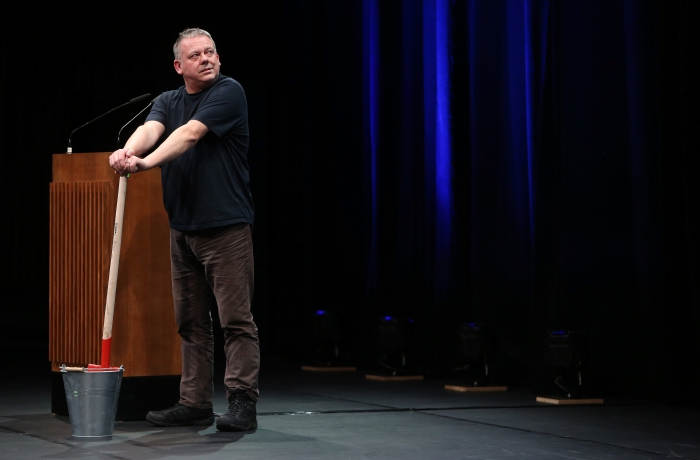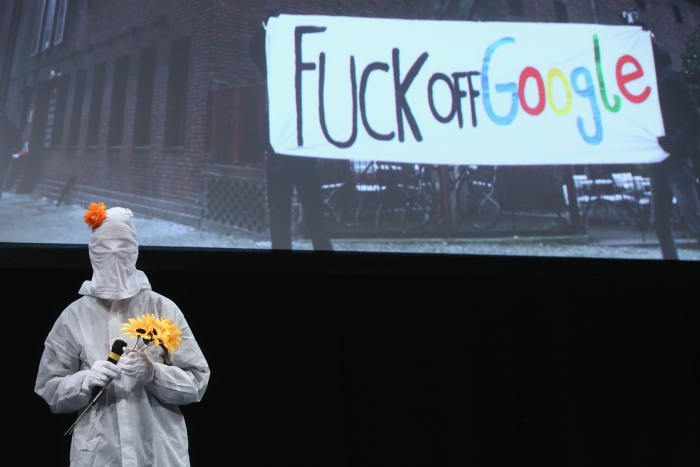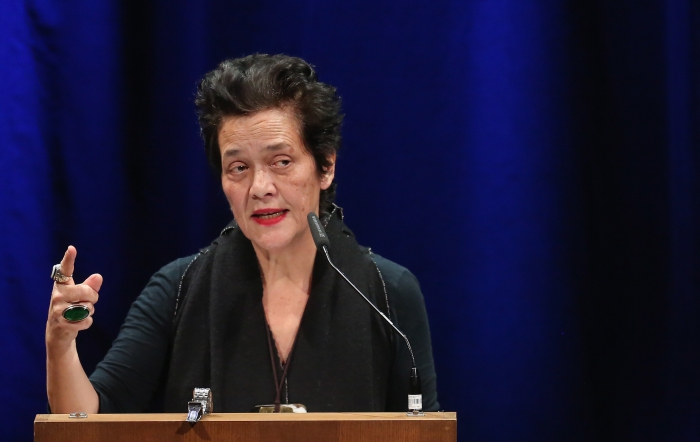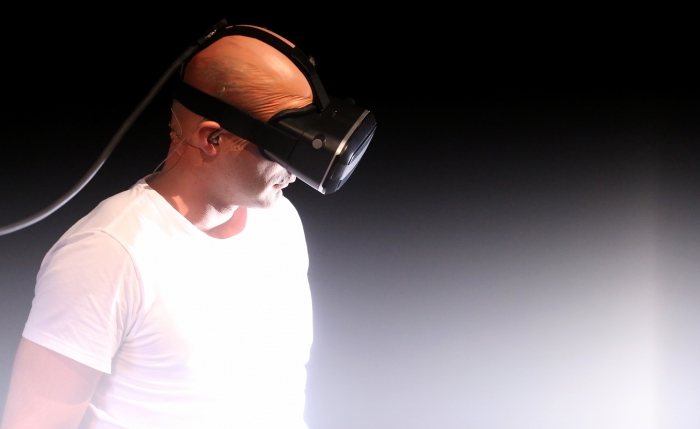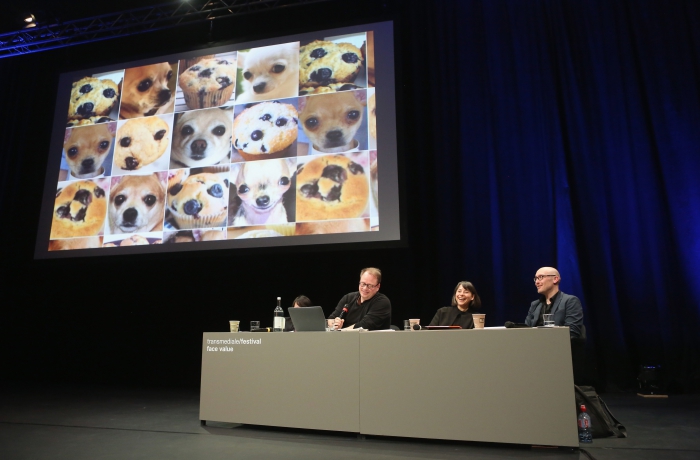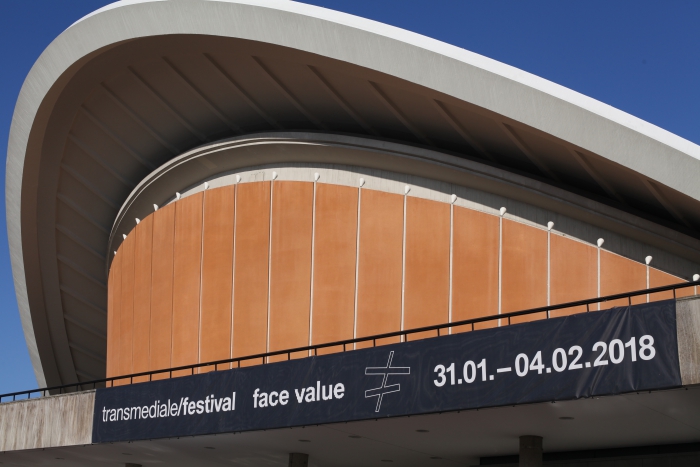transmediale 2018
face value
Things are what they are—but could they be different? transmediale 2018 face value aims to take stock of current affairs, to recognize things for what they are before saying how they could be different. It is an attempt to probe the values, as well as the processes of value creation, that have contributed to our present moment of extreme political, economic, and cultural divides. The festival seeks possible new ways of resisting and deconstructing the alarming development of a digital populism, the radicalization of net culture and the new culture wars.
“Taking things at face value” seems to have become the norm of public discourse amidst today’s reactionary and algorithmically guided communication practices. transmediale wants to challenge this impulse to judge things by their immediate appearance and instead look at less visible issues, which run deep across all sectors of society. These include power relations rarely discussed at digital culture events, such as contemporary imbalances of class, gender, and race, which are also being built into technological systems. In fact, rather than providing an emancipatory alternative, (post-)digital culture today seems to support hate-mongering, racist and neo-colonial powers.This, however, should not be a reason to lament a mythical past, back in which, supposedly, the internet was free and digital creativity unbound. Rather, there is a need to embrace both unsettling and uniting cultural practices, as well as daring speculative thinking, to promote auto-criticality and an awareness that nothing is ever as simple as its surface suggests. Similarly, cultural events like transmediale are made up of different political imaginaries and communities that are simultaneously resistant and complicit to the developments one so urgently needs to oppose.
With these challenges and paradoxes of the present moment in mind, how can artists, cultural workers, and speculative theorists respond to the current politics of taking things at face value and, at the same time, face their own values? How does one name biases and exploitative mechanisms for what they are, in order to formulate new ways to resist, deconstruct or move beyond them?
As usual, the program takes on a variety of curatorial formats and modes of knowledge exchange, which are united in a twofold approach of interrogating value and values, looking at cultural shifts against the background of economization and changing value sets. The curatorial approach is one of transversal combination of formats and participants across the whole program.
transmediale 2018 means transmediale 2018 does not mean transmediale 2018 means transmediale 2018
Kristoffer Gansing (artistic director), Daphne Dragona (conference program), Inga Seidler (exhibition program) & Florian Wüst (film & video program)
Website
Explore the ...
Conference program
Film & Video program
festival exhibition Territories of Complicity
and the guest exhibition A Becoming Resemblance
Participants
Check out the ...
video documentation
audio documentation
Festival Partner
Festival Team
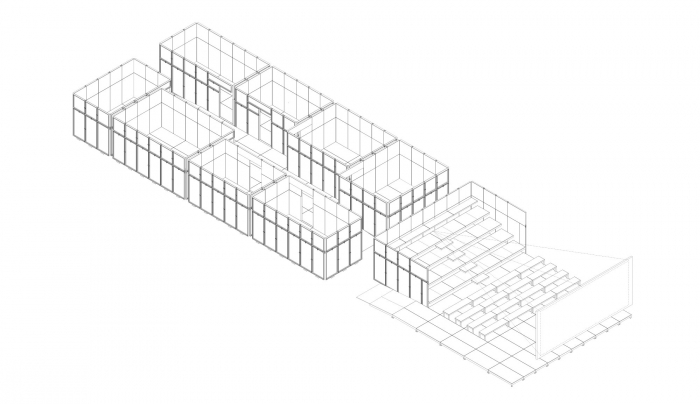
Exhibition Architecture 2018 – Territories of Complicity
From the Studiolo to the Free Port
by raumlaborberlin
With the exhibition architecture for Territories of Complicity, raumlaborberlin address the evolution of the physical space in which works of art have been collected over the centuries. In Europe the concept of art has changed since the early modern period, and with the emergence of the new class of the bourgeoisie, works of art became amassed a new value in addition to their religious and representational purpose.
The enclosed spaces of cabinets or studiolos, private study retreats in noble palaces, became the first collector’s rooms of the new era. In later iterations—as Wunderkammern and Kunstkabinette—these became precursors of contemporary museums. There, the encyclopaedic collected items were presented to a small audience, demonstrating the power and culturedness of the owner. Collections grew primarily with the purpose of serving scientist and researchers for their studies and later developed into museums: institutions that allowed a wider audience to enjoy a free access to art and culture.
Over the last few centuries, artistic artefacts have increasingly been collected like goods and exchanged on the market where, like other assets, their economic value is always affected by changes. As an asset, the artwork must be protected to preserve his value. Exhibiting it is seen as consumption. Transportation is always risky and even exposure to light can be harmful. Safe storage is necessary, preferably in countries where transitions of goods are free of customs duties and taxes. In free ports, collectors are once again reliant on the use of intimate spaces to preserve their treasures, so intimate that not even they have direct access to the artworks.
The exhibition hall of the Haus der Kulturen der Welt is invaded by a massive object. A platform, akin to a container ship, features eight container rooms, in which twelve artists are exhibiting, as well as a stage area for presentations and discussions. The works of art are displayed in cabinets as they once were, collected valuables of the Wunderkammer, but organized in a building that appears like a segment of an endless warehouse corridor with store rooms on both sides. The construction is realized using a ready-made; the stage element—a system based on a strong, defined grid, normally used to build horizontal surfaces for events—is reinterpreted and used vertically to create walls. Its modularity and the sharp and shiny technical appearance of the aluminium frames make reference to economic and spatial rationality and optimization that form the foundation of the system, linking to the physicality of free port facilities. At the same time, the warm brown of the elements and the enclosed spaces are reminiscent of the intimacy of the Renaissance studiolos, characterized by wooden wall paneling and furniture.
Impressions
Press releases
-
22.01.2018
-
10.01.2018
-
07.12.2017
-
16.10.2017
